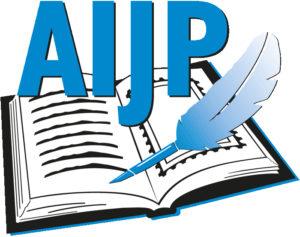(wm-pcp) “BERNABA’25, which took place from 14 to 17 May at the BernExpo halls, breathed new life into the world of philately. With over 220 exhibitors from around the globe, an array of unique collections, and a diverse supporting programme, this national and multilateral stamp exhibition attracted a large number of visitors. The event was dominated by the 175th anniversary of Swiss federal stamps. Of particular note was the presentation of the first federal stamps from 1850, which were printed by Carl Durheim, a Bern-based lithographer. However, it wasn’t just the past that was celebrated – BERNABA’25 also demonstrated how modern and vibrant stamp collecting can be today.”
This is how the Swiss Scout Philatelists’ Association described this thoroughly enjoyable event: a national and multilateral exhibition which it dubbed a ‘celebration of philately’ and, at the same time, a ‘glimpse into the future of stamp collecting’. The association was probably referring to the harmonious interaction between young and older collectors in the EXPO hall. The excellently produced 164-page A4 catalogue, available four weeks before the exhibition began, was proof of the professional planning that had gone into the event. It was the work of Jean-Paul Bach, the well-known professional philatelist from Basel. The layout of the exhibition, comprising 29 dealer stands, seven postal stands, and 16 club and working group stands, was equally well thought out and appealing. Philately took centre stage, surrounded by the offerings of various companies. Corinphila once again attracted visitors’ attention with its designer stand — and perhaps also with the South African wine available to taste throughout the event.
Visitors were drawn to the guarded treasure chamber, where small snakes could occasionally be found! An excerpt from the stamp collection of British King Charles III could be admired there. Meanwhile, literature enthusiasts could enjoy the extensive selection of books in a lavishly and stylishly furnished reading area, away from the hustle and bustle. Any specialist questions could be answered at the AIJP stand, located in front of the entrance, where the International Association of Authors and Journalists in Philately was on hand to provide assistance at any time. Lessons had been learned from the (certainly unintentional) omissions of HELVETIA 2022 in Lugano.
The extensive supporting programme included eight workshop stations at the heart of the event, which attracted a great deal of attention. These included paper making, lithography, calligraphy, genealogy, rayon plating and stamp design, among others. Eight special exhibitions showcased the various facets of philately surrounding the anniversary of the Durheim issues, and a packed programme of presentations and lectures was held every day. Almost everything went smoothly, even if it took a while to find some of the lecture rooms. Ultimately, however, this too was achieved, as was almost everything else. Even the list of winners was available more than a day before the gala evening, and like the catalogue it was free for all visitors. One wondered when this had ever happened before.
When asked about this by the author, Jean-Paul Bach said that, thanks to a generous contribution from the Swiss Philatelic Foundation – rumoured to be worth half a million Swiss francs – this was possible. The president of the organising committee, Jean-Pierre Senn, had done well to bring the best of the best into the team. This included the experienced commissioner, Giovanni Balimann; the jury president, Damian Läge; Jürg Roth, the representative of the Swiss Association; and Barbara Scherrer, who was jointly responsible for the secretariat and PR/press work. We will once again leave the last word to the president of the Swiss Scout Philatelists’ Association, who said:
‘When organising exhibitions like this, we should definitely draw on the expertise of advertising and marketing professionals, as well as teaching professionals from our collectors’ associations. These experts have the necessary know-how, and they represent more than just the perspective of philatelic associations. This is important for making the hobby accessible and appealing to a wider audience, especially young people and aspiring collectors. This is the only way to ensure the benefits of such an exhibition are sustainable, and to spread enthusiasm for philately to a broad audience. BERNABA’25 has demonstrated that philately is much more than a niche hobby. It is a living piece of cultural history that connects and inspires people of all ages. If we set the course right, the world of stamps can remain a place of encounter, learning, and enthusiasm in the future.”



Photo: Wolfgang Maassen

